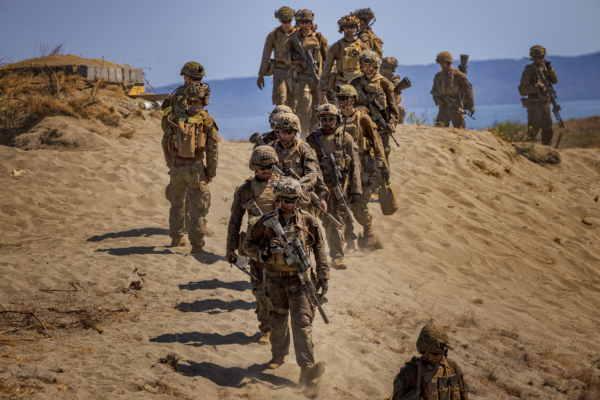Philippine’s top security official expressed on Friday (September 20) that the country aims to acquire medium-range missile capabilities in the future, and hopes to utilize the U.S.-deployed “Typhon” system for military training, with no immediate plans to return the weapon system.
According to a report by Reuters on Friday, National Security Adviser of the Philippines, Eduardo Ano, mentioned that the timeline for the United States to withdraw the “Typhon” medium-range missile system from the Philippines is still undetermined. The U.S. is currently testing the feasibility of using this missile system in regional conflicts.
The Chinese Communist authorities, citing risks of geopolitical confrontation, have demanded the U.S. to withdraw the medium-range missile system from the Philippines.
The “Typhon” medium-range missile system is capable of carrying cruise missiles that can strike targets inside China. As part of joint military exercises between the U.S. and the Philippines, the system was transported to the northern Philippines in April, marking its first deployment in the Indo-Pacific region. However, no missiles were launched during the military drills.
As a neighboring country to the southern region of Taiwan, the Southeast Asian archipelago of the Philippines plays a crucial role in the U.S.’s Asian strategy. If there is an attack on Taiwan by the Chinese Communist Party, the Philippines would be a key staging area for U.S. assistance to Taiwan.
The Chinese Communist authorities have criticized the deployment of this system in the Indo-Pacific region, accusing Washington of inciting an arms race.
Chinese Ministry of Foreign Affairs spokesperson, Lin Jian, expressed “serious concern” over reports regarding the deployment during a press conference on Thursday (September 19), labeling the practice as “seriously threatening regional security and exacerbating geopolitical confrontations.”
Discussing the Chinese Communist Party, Ano stated, “No one can dictate to us.”
He further emphasized the Philippines’ commitment to the U.S.-Philippine alliance, saying, “We know what is best for our country, so they (China) can’t dictate to us, especially on the issue of deploying this missile launcher.”
When asked how long the “Typhon” system would remain in the Philippines, Ano told Reuters, “We have no timetable for (withdrawal),” noting that the system is being used for training and enhancing the capabilities of the Philippine military. “There are currently no plans for withdrawal,” and its future will be determined by a small group of officials from both countries.
Satellite images taken by the U.S. private space and data company, Planet Labs, on Wednesday (September 18) showed the “Typhon” system stationed at Laoag International Airport on the northwest tip of Luzon Island in the Philippines, facing across the sea from China and about 250 miles from the Taiwan Strait.
The deployment of the “Typhon” system on the island not only covers the entire Taiwan Strait and Luzon Strait, but also reaches important coastal cities in China such as Shanghai and Guangzhou, as well as various joint military bases in the South China Sea.

